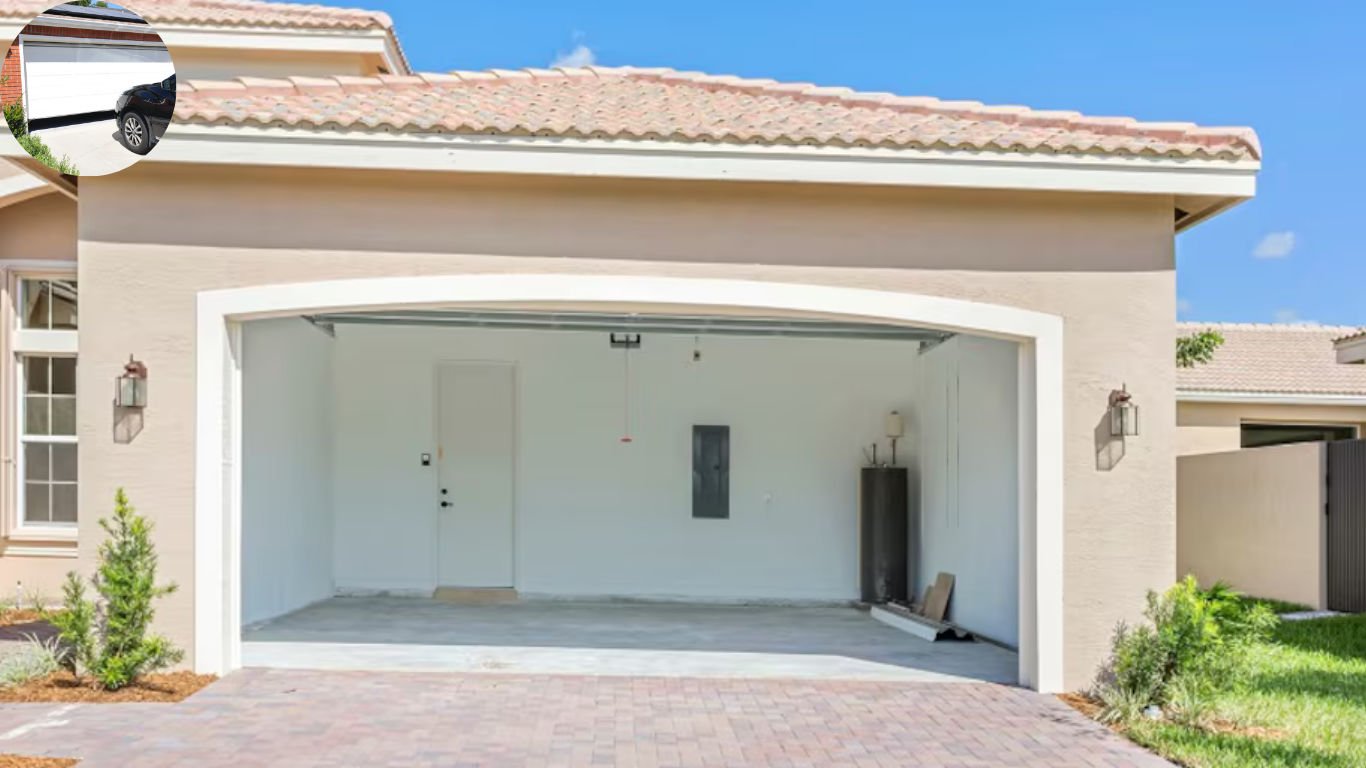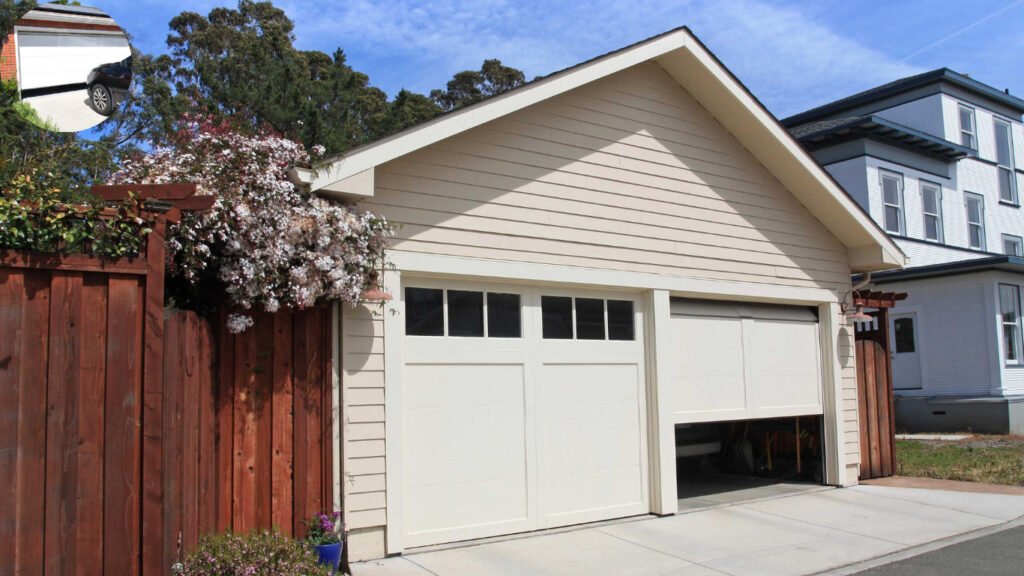Leaving your garage door open might seem like a simple hack to cool down your home, especially during hot weather when garages tend to heat up like ovens. However, experts caution that this method is generally ineffective for significantly cooling your house. While opening the garage door can increase airflow and ventilation, it often allows hot air, dust, pests, and even conditioned air from inside the home to escape, potentially making the house warmer rather than cooler. Additionally, leaving the door open poses security risks and can invite unwanted critters and environmental debris into your garage. Instead of relying on an open garage door, better solutions include improving insulation, installing ventilation systems, and using fans to manage heat and airflow more effectively.
The science behind cooling a house
Cooling a house involves more than just lowering the temperature. It’s about managing heat transfer and airflow.
It is natural for heat to move from warmer to cooler areas.This means that during hot days, your home absorbs heat through windows, walls, and roofs. Understanding how this process works can help you strategize effective cooling methods.
Air circulation plays a vital role too. Proper ventilation allows cooler air to flow in while pushing warmer air out. Fans can enhance this natural effect by promoting better airflow throughout your home.
A well-insulated space reduces the amount of heat entering from outside and keeps cool air trapped inside.
These principles are essential when considering different cooling strategies beyond leaving garage doors open or relying solely on air conditioning systems.
Factors that affect indoor temperature
Indoor temperature is influenced by several factors. One primary element is insulation. During the winter, well-insulated homes retain heat, and during the summer, they remain cool.
Windows also play a crucial role. Their type, size, and orientation affect how much sunlight enters a space throughout the day. Poorly sealed windows can lead to unwanted drafts or excessive heat.
The materials used in your home’s construction contribute as well. Concrete walls absorb heat differently than wooden ones, influencing the overall indoor climate.
Appliances generate heat too. Stoves and computers add warmth to spaces when running for extended periods, affecting comfort levels inside the house.
See also garage
How leaving a garage door open can impact indoor temperature
Leaving your garage door open can have unexpected effects on indoor temperatures. As hot air enters the garage, it might seep into adjacent spaces of your home. If your garage is attached, this is especially true.
Warm air from outside can create a chain reaction. The heat gradually infiltrates through walls and doors, making your living areas feel warmer than they should.
The last thing you want is to mix summer’s sweltering heat with your comfortable living space.
While it may seem like a quick fix for cooling down, leaving that door ajar could backfire by raising indoor temperatures rather than lowering them. It’s essential to consider how airflow behaves in enclosed spaces when thinking about strategies for comfort at home.
Expert opinions on the effectiveness of this method
Experts in building science and HVAC systems hold varied views on the effectiveness of leaving a garage door open to cool your home. Many agree that this method is unlikely to produce significant results.
An environmental engineer, Dr. Emily Carter, emphasizes the importance of airflow principles.She notes that simply opening the garage won’t guarantee cooler air will enter your living space effectively.
On the other hand, some local contractors suggest it might help marginally during specific weather conditions. For example, if there’s a strong breeze blowing in from outside, you may feel some temporary relief.
However, most professionals warn against relying on this practice as a primary cooling strategy. They stress that controlled ventilation and proper insulation are far more effective for maintaining indoor comfort levels during hot months.
See also does running the dryer really heat up your house
Potential consequences and risks of leaving your garage door open
Leaving your garage door open might seem harmless, but it can bring a host of risks.
First, security is a top concern. An open garage door invites burglars and trespassers. They see an opportunity to grab tools or valuables without much effort.
Then there’s the issue of pests. Rodents and insects are drawn to garages. Leaving the door ajar creates easy access for these unwanted guests, leading to potential infestations.
Environmental factors also play a role. Dust, rain, and debris can easily enter your garage when it’s open. This not only makes for more cleanup but could damage items stored inside.
Open doors allow conditioned air to escape from nearby living spaces, forcing cooling systems to work harder and increasing utility bills over time.
If you have pets that roam freely in the area, leaving the door open could lead them into dangerous situations outside where they may encounter traffic or wildlife.
Alternative ways to cool your house without wasting energy
If leaving your garage door open isn’t the cooling solution you hoped for, don’t worry; there are several effective ways to keep your home comfortable without wasting energy.
One of the simplest methods is utilizing fans strategically. Ceiling fans can create a wind-chill effect, making it feel cooler indoors while allowing you to raise the thermostat setting by a few degrees. To maximize airflow, rotate your ceiling fan blades counterclockwise in summer.
It is important to block out sunlight during peak hours with shades, blinds, and curtains. Reflective films on windows can also reduce heat gain significantly without compromising natural light.
You might consider sealing any cracks or openings around doors and windows as well since they can let hot air seep inside. Proper insulation not only keeps cool air from escaping but also prevents warm outdoor air from entering.
Landscaping plays an important role too. Planting trees or shrubs near windows provides shade and helps lower indoor temperatures naturally over time.
These strategies allow you to maintain a comfortable environment while being mindful of energy consumption and costs.

